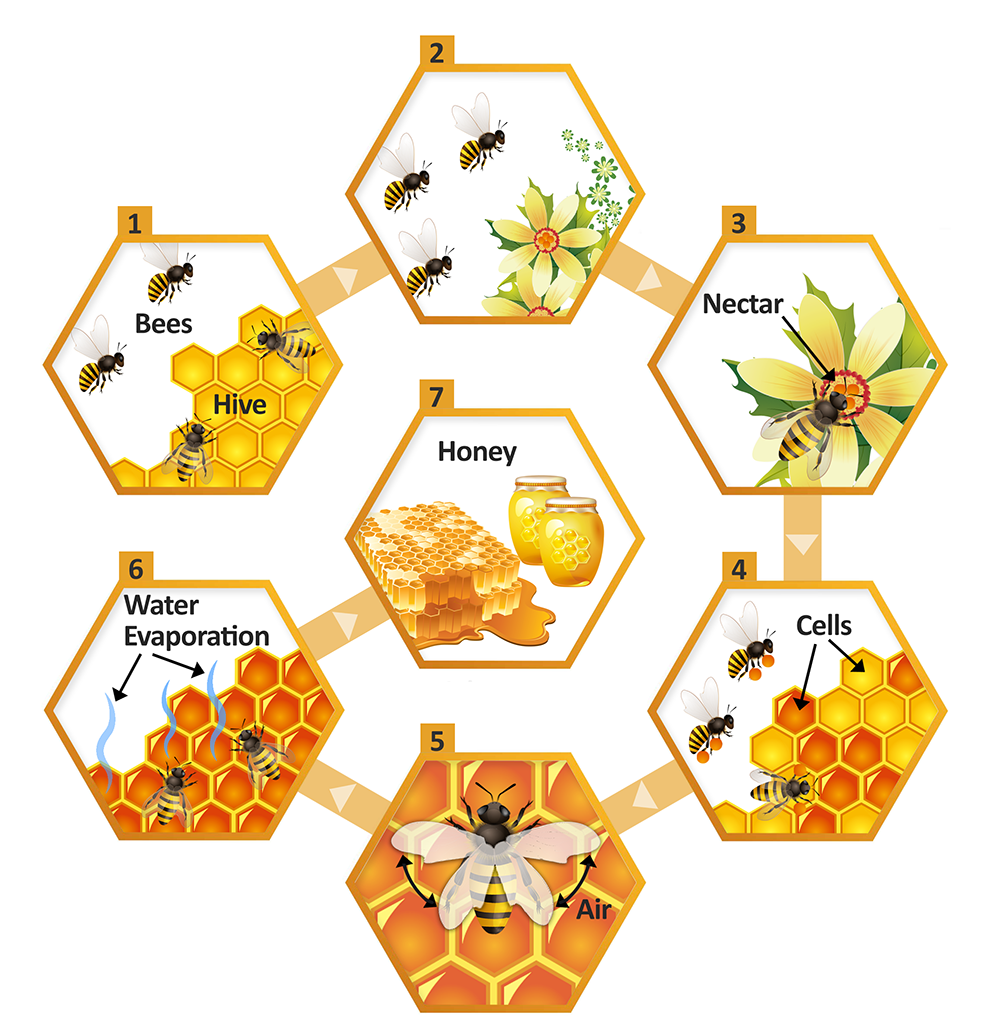You should spend about 20 minutes on this task.
The diagram illustrates how bees produce honey. Summarise the information by selecting and reporting the main features, and make comparisons where relevant.
Write at least 150 words.

Sample Answer
The diagram shows the seven most important stages in the making of honey by bees. The process begins with the honey bees building a hive, and then finishes when the honey is ready to be collected and used.
Firstly, the bees have to build a container. This is called a hive and it consists of many individually built cells. Next, the bees leave the hive in order to search for flowers. When they find a suitable flower, they collect the nectar from it, which is used to make honey.
The nectar is then taken back to the hive where the production process can begin. First, it is put into cells. Then, following this, the nectar must be cooled down. In order to do this, the bees fan the nectar-filled cells with their wings. As a result, the nectar loses its water content and then finally, the honey is produced.
(150 words)
